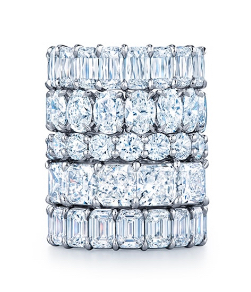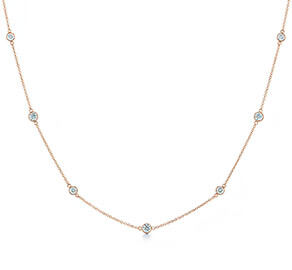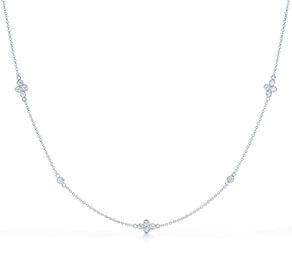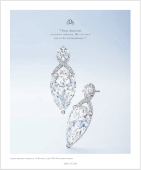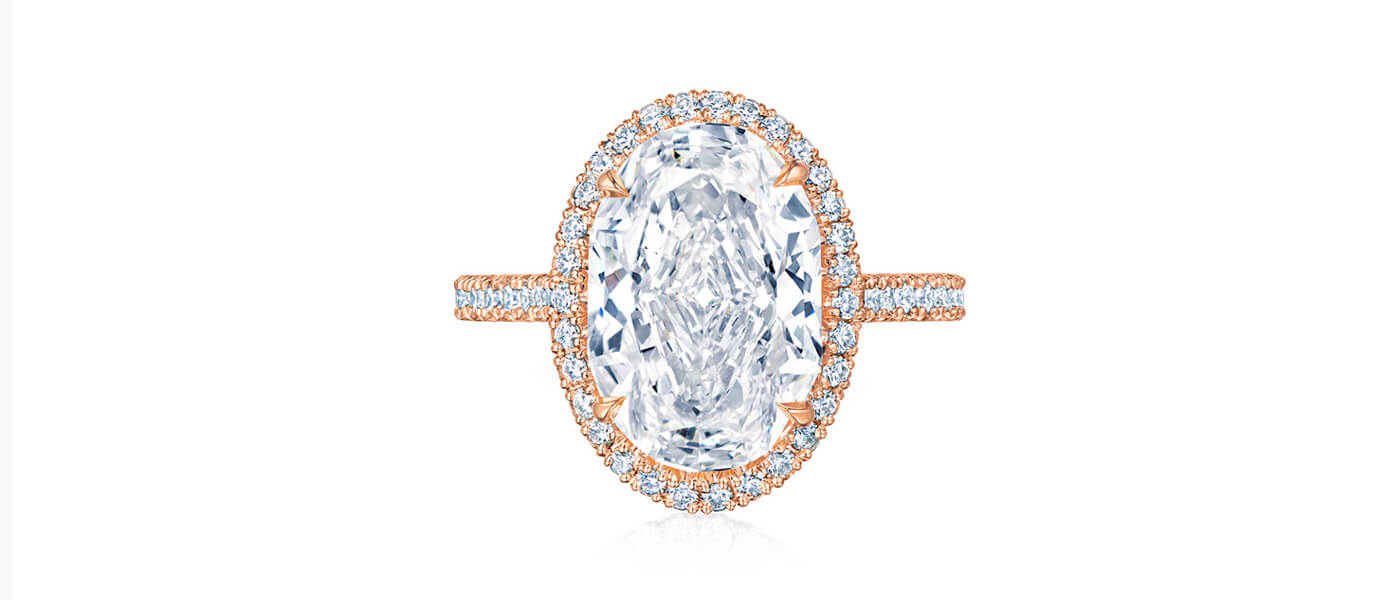CELEBRITIES WHO HAVE SAID YES TO THE ASSCHER CUT

Jennifer Lopez
A stunning large emerald cut diamond ring that made its debut on Instagram

Elizabeth Taylor
Formerly called the Krupp diamond, this emerald cut of more than 30 carats was renamed the Elizabeth Taylor Diamond in 2011.

Amal Clooney
A sleek, simply set emerald cut diamond ring.
THE FOUR Cs AND MORE
GOOD TO KNOW
- Women who gravitate to oval cut diamond engagement rings enjoy traditional round brilliant diamonds but desire something slightly more unique. The oval diamond offers a novel alternative to a round stone.
- An oval diamond ring visually elongates the finger and flatters all hand shapes.
- Oval diamonds offer excellent value in terms of their size appearance and price in relation to round diamonds of comparable quality.
CARAT WEIGHT
- Oval cut diamonds appear large for their carat weight because of their elongated silhouette. They also appear larger than other shapes with equal carat weight.
COLOR
GIA COLOR SCALE
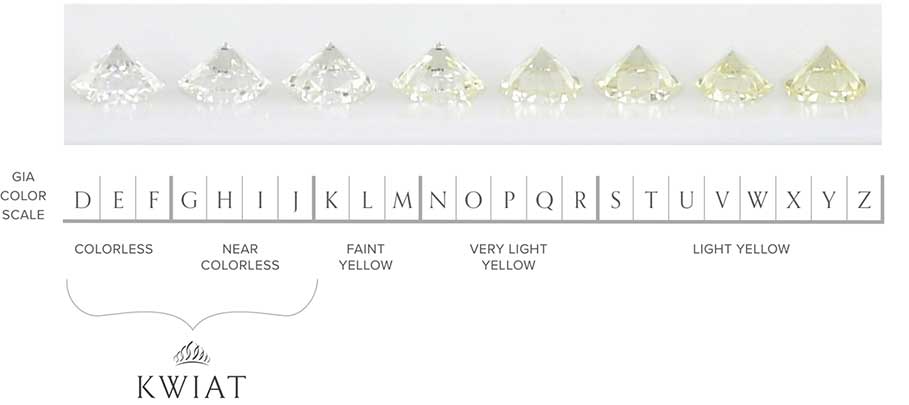
- Oval diamonds appear colorless through the H color grade range. While some stones in the I range will appear colorless, others may exhibit a yellowish tint when viewed face-up.
- At the J color grade and below, most oval diamonds display visible tinting.
- At Kwiat, we do not offer stones that show obvious color flaws in respect to their color grades.
CLARITY
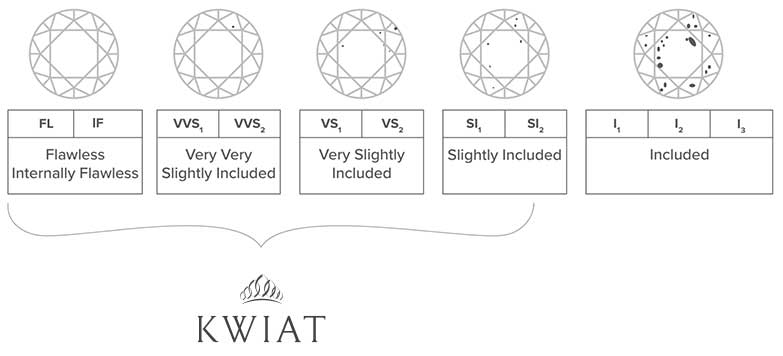
- The brilliant faceting pattern’s sparkle helps to mask internal inclusions within an oval diamond.
- Kwiat’s recommend clarity range for an oval cut diamond runs between VS1 and SI1, as long as the SI1 appears clean and clear to the naked eye. Infrequently, SI2 oval diamonds can appear clear to the eye, though it is not typical.
- Our diamonds are the best of their respective clarity grade, and Kwiat’s SI1 and SI2 oval cut diamond rings do not show any inclusions visible to the naked eye.
CUT
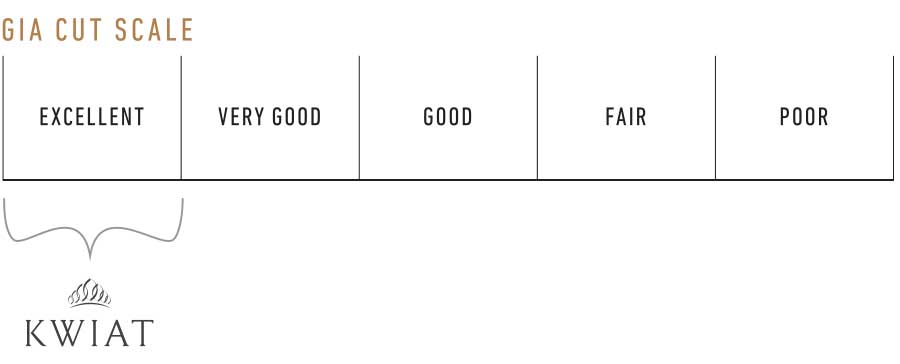
- Cut is the most important qualitative element when selecting an oval cut diamond engagement ring. Oval diamonds usually have a brilliant cut faceting pattern similar to round brilliant diamonds. This type of faceting gives the oval brilliant cut diamond the same sparkle as its round cousin.
- A well-cut oval diamond is bright and brilliant, with minor differences in the center and ends of the diamond. A properly cut oval diamond also displays its size well.
- A poorly cut oval diamond can exhibit a pronounced bow tie effect. This effect occurs in diamonds with elongated shapes. This visual phenomenon creates darkness across the center of the diamond, fanning out from the mid-point to the edges. A pronounced bow tie is unattractive, appearing as dark interruptions in the faceting pattern’s brilliance and consistency.
- The GIA report for an oval cut diamond will typically read “Oval Brilliant” for the shape and cutting style.
Occasionally, the report will read “Oval Modified Brilliant,” which indicates subtle changes to the brilliant faceting pattern. These changes are usually designed to enhance the diamond and are not considered problematic. - The GIA does not assign Cut grades for oval shape diamonds, which is why trusted professional guidance is so important.
- At Kwiat, all of our oval diamonds are beautifully cut to maximize their beauty and size appearance, and to minimize any bow tie effect.
RATIO
- A diamond’s ratio is its length divided by its width. The higher the ratio, the more elongated the diamond will appear.
- The ratio range for an oval diamond usually runs between 1:1.35 and 1:1.5. Stones with a length to width ratio of less than 1:1.35 may seem short and squat to the eye, more like an off-round shape than a graceful oval, while those with a length to width ratio of more than 1:1.5 may seem too long and thin, nearer to a marquise shape than a classic oval.
- Though not classic, an extremely elongated oval shape has a dramatic appearance and can still make a lovely choice for an oval cut diamond engagement ring.
DEPTH PERCENTAGE
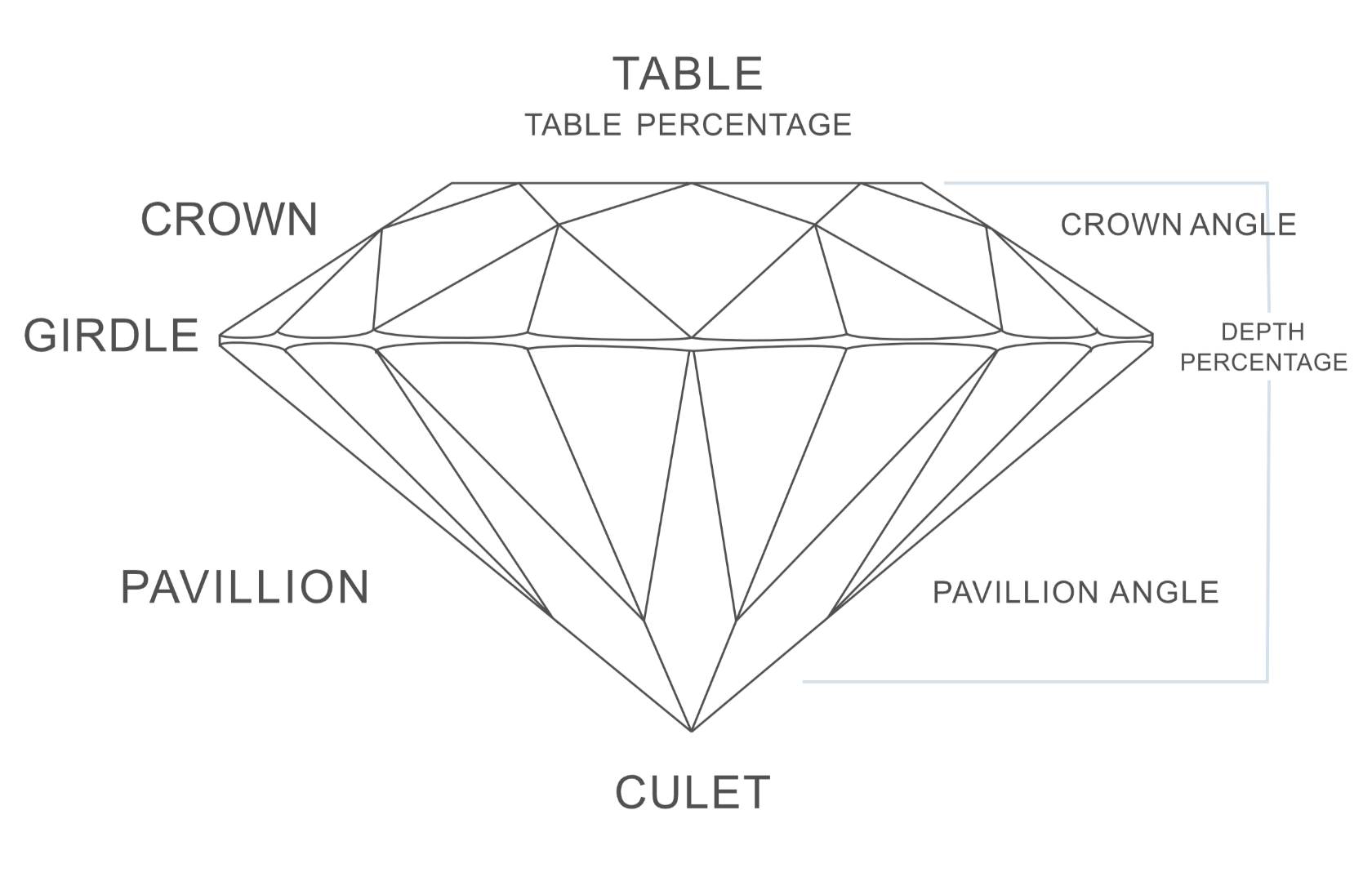
- There is not a rigid set of depth percentage parameters for oval diamonds. The more elongated the stone, the higher its depth percentage will be.
- Our recommended depth percentage for an oval cut diamond ranges from 58 to 65 percent in order to maximize brilliance and display size properly.
- Oval diamonds with depth percentages below the recommended range may seem glassy and lose their brilliance, while ovals with depth percentages above the recommended range will seem small for their size, carrying too much weight on the underside of the stone. On occasion, oval stones with larger carat weights and low depth percentages may still appear brilliant.
TABLE PERCENTAGE
- There is not a rigid set of table percentage parameters for oval diamonds, and a wide range is accepted for this shape.
- Most ovals have table percentages somewhere between 53 percent and 61 percent. Stones with table percentages below the recommended range can appear small for their size. They may also display unattractive reflections in the center of the diamond. On the other hand, those with table percentages above the recommended range often appear flat and glassy, resulting in less fire reflected from the crown.










